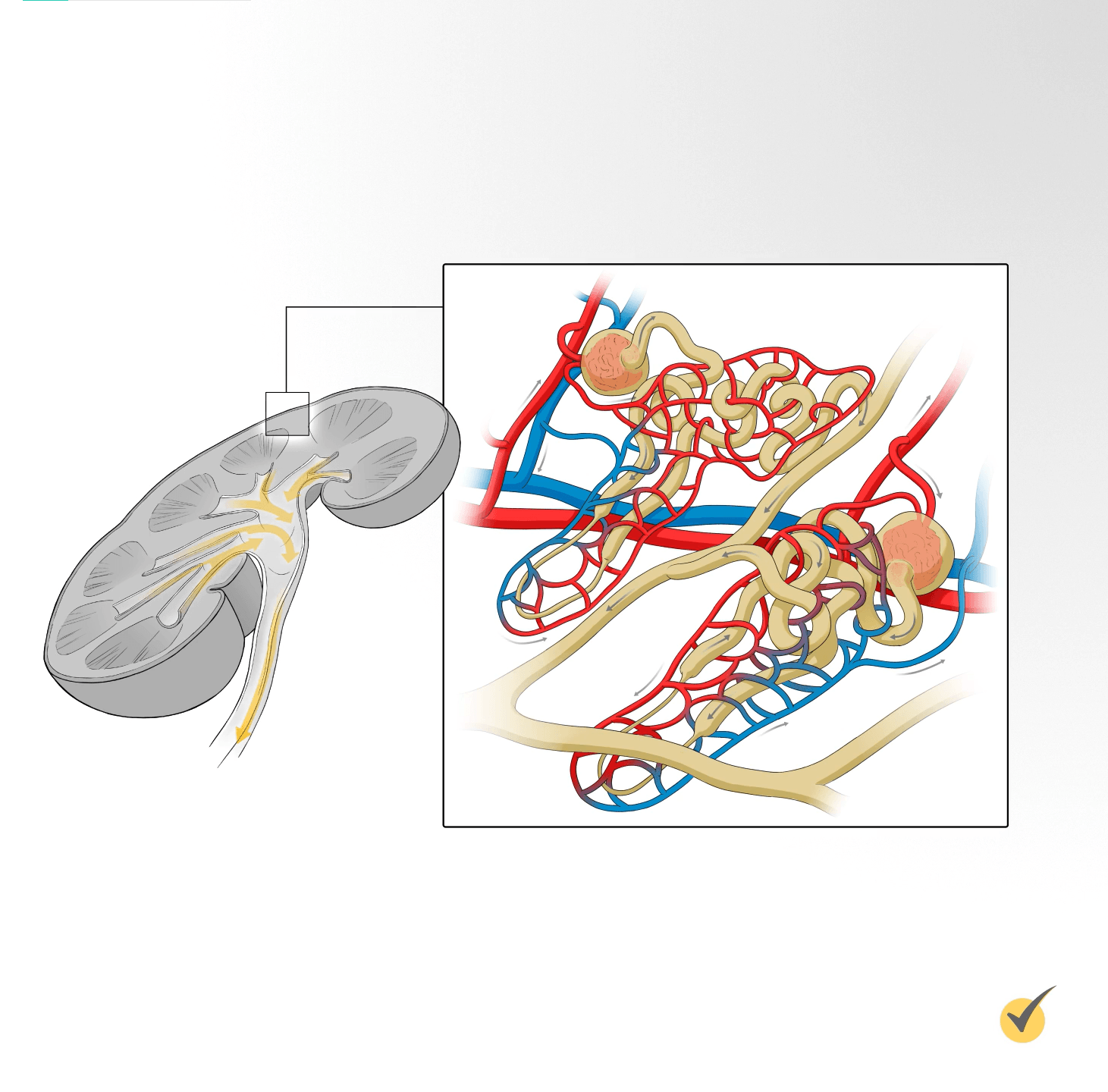Nephrotic Syndrome

The nephron, which comes from the Greek word for kidney, is the functioning unit of the kidney. It filters out waste products in the blood, keeping what is needed and discarding the rest via urination. The kidneys keep a fine balance of water to solutes in the blood and are vital to the body’s healthy functioning. As with any other body system, when something becomes out of balance, disease can occur. Such is the case with nephrotic syndrome.

Nephrotic syndrome is a collection of symptoms that point to kidney damage. The symptoms include albuminuria (large amounts of protein in the urine), hyperlipidemia (elevated cholesterol levels in the blood), hypoalbuminemia (low levels of albumin in the blood), and edema in the legs, feet, or ankles.
Due to disease causes, which we will look at in a moment, the blood vessels in the kidney become damaged and cause the filtration process to be ineffective, spilling protein into urine, and causing edema or swelling in the body. Other common signs and symptoms include fatigue, loss of appetite, foamy urine, and weight gain. Nephrotic syndrome can happen in children, most common between ages 4-6, and in adults, more common in men than women.
The most common secondary cause of nephrotic syndrome in both children and adults is diabetes. Other systemic diseases that can cause nephrotic syndrome include:
- lupus
- HIV
- Hepatitis B
- Hepatitis C
The most common primary cause of nephrotic syndrome in adults is focal segmental glomerulosclerosis (FSGS), which is scarring or hardening of blood vessels in the kidney. The most common primary cause of nephrotic syndrome in children is minimal change disease (which simply means spilling protein into the urine). Nephrotic syndrome can also be caused by certain medications like: non-steroidal anti-inflammatory drugs and drugs used to fight infection.
Due to the swelling caused by nephrotic syndrome, other problems can develop throughout the body, such as blood clots leading to heart attack and stroke. Other complications of nephrotic syndrome include:
- anemia
- heart disease
- hypertension
- hypothyroidism
- acute kidney injury
- renal failure
Left untreated, nephrotic syndrome can also lead to the need for dialysis or a kidney transplant due to the damage the kidneys sustain. There is no cure for nephrotic syndrome, but treatments can help with symptoms and prevent further kidney damage. Diuretics help the body get rid of the excess water and edema; blood pressure medications help with maintenance of a normal blood pressure, since the kidneys help regulate blood pressure; and blood thinners keep the blood from clotting. Corticosteroids may be used to decrease some of the inflammation associated with nephrotic syndrome, and cholesterol-lowering drugs may be used to help prevent plaques that may form and cause clots. Some lifestyle changes that patients with nephrotic syndrome may be asked to make include lowering the amounts of protein, fat, and salt in their diet and controlling their blood sugar if diabetes is the cause.
Review
The most prevalent disorder that can lead to nephrotic syndrome in children and adults is:
- Stroke
- Myocardial infarction
- Diabetes
- Hypertension
This is the number one disorder that can lead to nephrotic syndrome in adults and children. Stroke, myocardial infarction, and hypertension can all be caused by nephrotic syndrome.
Thanks for watching, and happy studying!
